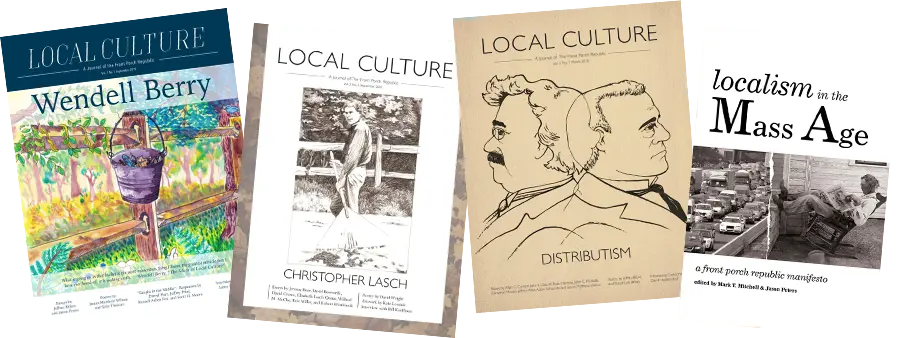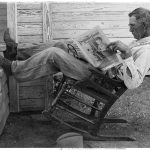Just inside the doors, where the hallway smells faintly of pencil shavings and lemon cleaner, a cardboard box waits. LOST & FOUND, a child once wrote in thick marker. In the morning rush it gathers a small platoon of orphans: a left-handed mitten, a dinosaur bottle with its sticker half-peeled, three navy sweaters pretending to be the same sweater. A child pauses, fingers the dent in the bottle as if it were a secret, and brightens. “Mine.” No applause. No policy. The world is a little more in order than it was a minute ago.
The lost and found is a tiny republic that runs on custom, not rule. No one votes to establish it; no ordinance gives it life. It persists because people expect it to. Things go missing. Neighbors try to send them home. The box works because a residue of trust lingers in places like schools, parishes, and rec centers—the trust that strangers will behave as neighbors when an object asks them to.
Name a thing and obligations gather. A jacket with a child’s name becomes more than fabric. It says, quietly, “I belong to someone,” and that summons a conscience no sign can manufacture. Treat everything as anonymous and replaceable and you make a different kind of person. If a thing has no story and another can be summoned by click to arrive that evening, the hand loosens. The box keeps the older truth alive: it matters that this belonged to you.
Because it is so ordinary, the box is easy to overlook. People hurry past, promising to look tomorrow. Watch it for a week and a grammar appears. Objects enter through inattention, weather a brief exile, and return by the good offices of whoever noticed. There is almost always a clerk—though no one calls the figure that—an older child who straightens the pile, a custodian who keeps the chaos from tipping, a parent who remembers sizes and seasons. There is a ledger of sorts, even if only in memory: “I think I saw a red hat by the gym.” And there is amnesty. No one interrogates the wanderer. If a bottle can be reunited, it is; if not, it gets a second life elsewhere. The logic is less legal than liturgical. We receive, we tend, we return, we release.
This cycle contradicts the reigning story of our economy. That story is swift and solitary: order, deliver, use, discard. It is not hostile to virtue, only indifferent. The box is slow and mutual. It trains attention, and attention mothers civic goods. You cannot send things home unless you notice them, and you cannot notice them unless you admit the hallway belongs to you too. The box asks us to say, “This place is ours.” It asks the same of children. Without lecture, they learn that public life is stitched together by actions too small to count—picking up and setting right.
Don’t turn it into a program. Resist diagrams, laminated schedules, and scolding signage. What gives the box its moral charge is that it runs on custom and consent, a kind of common law everyone understands without codifying. Bureaucratize it and the life seeps out. Shame people into it and trust thins. Its quiet power is that people act rightly because they expect others will too.
Of course it fails. The heap creeps past the rim. Someone holds up a hoodie like a citation. A well-meaning adult hardens courtesy into a lecture and the room cools. Yet small forms heal themselves. A straightened pile, a plain reunion, a kind word as the bottle changes hands. The custom revives because it lives in a few people of good will and requires neither a meeting nor a budget to restart.
Step back, and the box becomes a parable of the commons. We like the tragic version—a pasture that’s overgrazed. The hallway offers another: a place where the right to use is matched by the duty to return. This is not enforcement; it is expectation. People bring things back because that is what people like us do. Small communities can sustain shared goods by custom. The hallway box is one of those customs.
What follows from this small case?
Naming isn’t possessiveness; it’s promise. A name ties a thing to a person and a person to a place. Our anonymity—online, transactional, hurried—loosens those ties. Names tighten them. Streets whose walkers know the names on the mailboxes are safer than streets navigated only by GPS. The same in schools when the bottle says “Amaya” or “Luis” and the hand that finds it knows where to point it.
Return is the first law of justice many children learn. “I found this; I brought it back.” It is a duty so small it hardly sounds like a duty, which is why it works. We will not legislate a national habit of restitution, but neighborhoods can teach it daily. When the reflex is set early, larger restitutions become thinkable. A culture that can return a mitten can also return a favor, a tool, a call.
Stewardship precedes sentiment. People learn to love places they help keep. Order attracts care; chaos breeds neglect. Citizens aren’t made by slogans. They are made by chances to keep rather than merely to use. The lost and found is one such chance—small almost to the point of insult, which makes it perfect. It is hard to be cynical when a child says, “This wanted to come home,” and hands you a bottle you had given up for gone.
Story turns space into place. A returned bottle is not only plastic; it is a trace of a day at the park, a camp sticker, a lunch that made it three-quarters full. People remain not only because mortgages work or test scores promise, but because a room keeps their names and their things. The box collects these fragments and lets us rehearse what it means to live among one another’s stuff and, therefore, one another’s lives.
If you want numbers, there are some. A week when twelve hoodies go home feels different from a week when none do. A hallway that stays tidy feels different from one slumped under a mound of sweaters. But the tally only points back to the custom that produced it. The custom matters, as well as the expectation beneath it: we are the kind of people who give things back.
The scene is small, and that is its strength. Societies that hope to outlast their slogans depend on local, practical solutions that run on trust because they have been entrusted to ordinary people. We are fond of announcing campaigns to reweave the social fabric. The fabric is re-stitched by habits already present but often ignored. A box by a door. A hand that picks up. A name that calls an object to account. A neighbor who trusts you will do the same when it is her turn.
By afternoon the rush has thinned. The sweaters have found their people. The dinosaur bottle is on its way. The sign still says LOST & FOUND, though the room feels less like a place that loses and more like a place that keeps. The custom is older than any of us and younger than the child who just said “Mine.” If we still know how to keep a hallway, we may also know how to keep a neighborhood. And if a neighborhood can be kept, more can follow.
We mend a place when we learn to send things home.
Image via Wikimedia.





